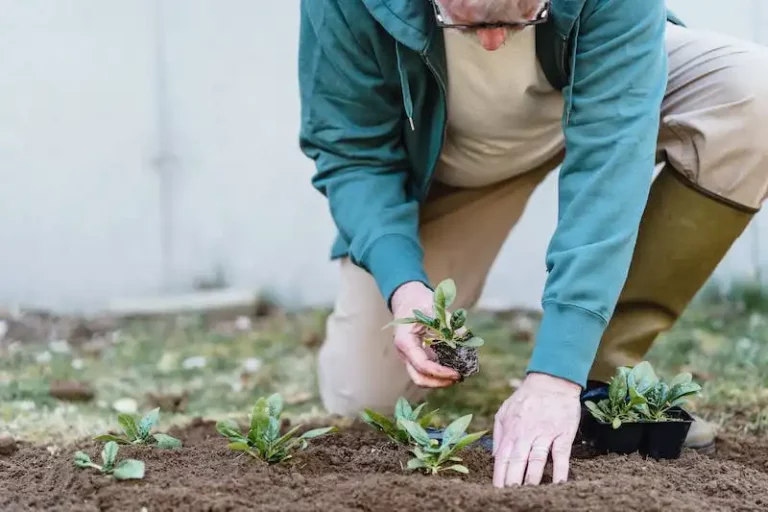Valerian, also known by its scientific name Valeriana officinalis, is a useful herb that has been used for its medicinal properties for centuries. Native to Asia and Europe, this plant is easy to grow and makes a nice addition to any garden.
Valerian plants prefer to be planted in areas with plenty of sunlight, but they can tolerate some shade. They grow best in well-draining soil and can thrive in various soil conditions. These hardy plants can be grown in zones 4-9 and can withstand frost.
Valerian plants have large, airy foliage and produce clusters of fragrant, small flowers that have a lovely perfume. Interestingly, valerian is often compared to catnip in terms of its smell, and many believe that cats are attracted to it just as much as to catnip.
When it comes to harvesting valerian, the most commonly used part of the plant is the root. The roots are harvested in the spring or fall, depending on the region and the plant’s growth cycle. To harvest the root, wait until the foliage has died back, then carefully wash and thoroughly dry the root before use.
To grow valerian in your garden, start the seeds indoors in mid-March, then transplant the seedlings outside once the danger of frost has passed. Valerian plants should be spaced about 2 feet apart to allow for their large size and support.
Caring for valerian is fairly simple. These plants do not require much attention and can often be left to grow on their own. However, if you want to ensure the best growth and health, provide them with plenty of water and keep the soil moist.
Valerian plants are a great companion to other plants in the garden. They attract beneficial insects and can help deter pests. In addition, valerian works well as a natural support for other plants, as its tall stems provide a sturdy foundation.
Whether you’re an avid gardener, an herbalist, or just someone interested in growing your own medicine, valerian is a plant worth considering. Its long history of use as a calming herb and its pleasant taste make it a great addition to any garden. Try growing valerian and discover the many benefits this plant has to offer.
How to grow valerian
If you want to grow valerian in your garden, here are some key steps to follow:
| What to do | When to do it |
|---|---|
| Sow valerian seeds | March to June |
| Keep soil moist | Throughout the growing season |
| Place valerian in a sunny spot | Valerian likes full sun but can tolerate some shade |
| Support valerian plants | Valerian plants can grow tall, so provide support as needed |
| Harvest valerian roots | After the first frost in late fall or winter |
| Leave the plants | Some gardeners believe that leaving the plants in the ground over winter can improve the flavor of the roots |
Valerian is a hardy plant that thrives in many growing conditions. It is often used as a companion plant in the garden because it attracts beneficial insects and repels pests. Valerian also has medicinal properties and is commonly used as a sleep aid and natural remedy for anxiety.
Valerian plants can grow up to 4 feet in height and spread to cover a large area. They have delicate white or pink flowers that appear in late spring or early summer. The leaves of the valerian plant have a lemon-like scent, which is why it is sometimes called “lemon balm.”
Valerian is easy to grow from seed or seedlings. If starting from seed, sow them directly into the garden in early spring or start them indoors 6-8 weeks before the last frost. Valerian seeds need light to germinate, so only press them lightly into the soil and do not cover them. The seedlings should appear within a few weeks.
Once the valerian plants are established, they require little care. They prefer well-drained soil with plenty of organic matter, and they should be watered regularly to keep the soil moist. Valerian is a self-sowing plant, so if you allow the flowers to go to seed, you’ll have valerian popping up in other parts of the garden.
In terms of climate, valerian is hardy in USDA zones 4-9. It can tolerate mild frost, but it is best to protect the plants during harsh winters. Harvesting the valerian roots can be done in late fall or winter. Dig up the whole plant and wash the roots thoroughly before drying them. The dried valerian roots can be used to make tea or tincture.
Valerian is a versatile and useful plant for any gardener or herbalist. Whether you want to grow it for its medicinal properties or simply enjoy its fragrant flowers, valerian is a rewarding addition to any garden.
How to grow valerian
Valerian plants are a great addition to any garden, thanks to their attractive foliage and soothing properties. Here’s an overview of how to grow valerian plants in your garden:
- Choose the right location: Valerian plants thrive in full sun to partial shade conditions. They prefer well-drained soils, but can tolerate a wide range of soil types.
- Planting: You can start growing valerian plants from seeds or root cuttings. If using seeds, sow them directly in the garden in spring or fall. If using root cuttings, plant them in well-drained soil and wait for them to establish.
- Watering: Valerian plants require regular watering, but make sure not to overwater them. They prefer moist soil, but do not like standing water.
- Care and maintenance: Valerian plants are relatively easy to care for. Remove any weeds and keep the area around the plants clean. Prune back the plants after flowering to encourage new growth.
- Harvesting: Valerian plants are typically harvested for their roots, which are used to make herbal remedies. Harvest the roots in fall or spring after the plant has had a few years to establish. Simply dig up the roots and rinse them thoroughly before use.
- Companion planting: Valerian is a good companion plant for other herbs and vegetables. It attracts beneficial insects and repels certain pests.
- Indoor growing: If you don’t have space in your garden, you can also grow valerian plants in containers indoors. Just make sure to provide them with plenty of sunlight and well-drained soil.
Growing valerian plants can be a rewarding experience, whether you’re a seasoned gardener or just starting out. They add a nice touch to any garden and their scent is believed to have calming effects. So why not give valerian a try in your own garden?
References:
– National Gardening Association: https://www.garden.org/plantfinder/plantguide.php?q=valerian
– The Old Farmer’s Almanac: https://www.almanac.com/plant/valerian
Where to grow valerian
If you’re a gardener and you’re wondering where to grow valerian, you’ll be happy to know that this herbaceous plant can thrive in a variety of conditions. Valerian plants, scientifically known as Valeriana officinalis, are native to Europe and parts of Asia. They have been used for centuries as a medicinal herb, particularly for their sleep-inducing properties.
Valerian plants prefer rich, moist soils that allow for good drainage. They can tolerate a range of soil types, including sandy or loamy soils. When it comes to sunlight, valerian plants prefer a spot that receives full sun to partial shade. In areas where the summers are very hot, some afternoon shade can be beneficial.
If you’re planning to grow valerian from seed, you can start the seedlings indoors in late winter or early spring. You can also plant the seeds directly in the garden in early spring. Valerian seeds are small and should be sown shallowly, just barely covered with soil.
Valerian plants grow quite large, reaching a height of 4 to 5 feet (1.2 to 1.5 meters) and a spread of about 2 to 3 feet (0.6 to 0.9 meters). They have attractive, fern-like foliage and produce clusters of small, fragrant flowers that attract bees and butterflies.
While valerian plants are known to be quite hardy, they’re also susceptible to certain pests and diseases. Keeping the soil consistently moist and providing plenty of airflow can help prevent potential problems. Additionally, planting valerian near catnip can help deter pests, as the strong scent of catnip is known to repel them.
In terms of companion planting, valerian makes a great companion to many other plants in the garden. It’s believed to enhance the growth and flavor of vegetables such as tomatoes and broccoli. Valerian’s strong aroma can also deter certain pests, making it a helpful addition to any garden.
Harvesting valerian roots is a common practice among herbalists and home gardeners alike. The roots are typically harvested in the fall, after the plant has had a chance to establish itself and store up nutrients. To harvest the whole root, simply dig up the plant and carefully remove any excess soil. The roots can then be washed and dried for later use.
In summary, valerian can be grown in a variety of soils and light conditions, although it prefers rich, moist soils with good drainage. It can be started from seed indoors or directly sown in the garden. Valerian plants grow quite large and can be good companions to other garden plants. Harvesting the roots in the fall allows you to benefit from the plant’s medicinal properties.
How to plant valerian
Valerian is a useful and easy-to-grow herbaceous plant that is commonly found in gardens. If you are wondering how to plant valerian, here are the steps to follow:
- Choose a well-drained area in your garden to plant valerian. Valerian prefers rich, loamy soil and full sun to partial shade.
- Start by planting valerian seeds indoors in late winter or early spring. Sow the seeds in small pots or seed trays filled with a seed-starting mix.
- Thoroughly water the seeds and keep them moist until they germinate, which usually takes about 2 to 3 weeks.
- Once the seedlings are about 2 inches tall, you can transplant them into the garden. Space the seedlings about 12 inches apart to allow for their growth.
- Valerian plants should be watered regularly, especially during dry spells. However, be careful not to overwater them, as they prefer slightly dry conditions.
- Valerian plants can be harvested when the stems and foliage reach their full size, usually in late summer. Cut the plants about 1 inch above the ground and wash them thoroughly.
- You can use the harvested valerian plants fresh, or you can dry them for later use. To dry the valerian, hang the plants upside down in a cool, dry area until they are completely dry.
- Valerian plants can be divided every 3 to 5 years to prevent overcrowding and maintain their vigor. Divide the plants in early spring before new growth starts.
Note: Valerian plants have a strong, earthy smell that some people find unpleasant. However, the plant’s roots are valued for their medicinal properties and are commonly used in herbal medicine to promote relaxation and sleep.
Valerian is also a companion plant, as it attracts beneficial insects and is thought to repel pests such as aphids and Japanese beetles. Consider planting valerian alongside other plants in your garden to help boost their growth and health.
Valerian is not recommended for home gardeners who have cats, as the plant’s strong scent can attract them and cause them to dig up the garden. If you have cats, it’s best to keep them away from the area where valerian is planted.


